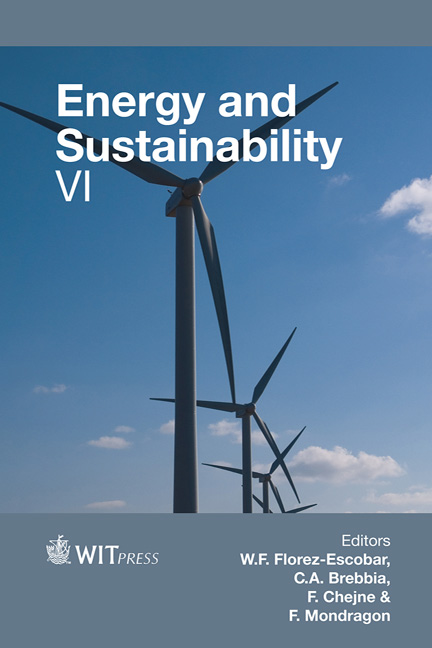Design Of A Hydrokinetic Turbine
Price
Free (open access)
Transaction
Volume
195
Pages
12
Page Range
137 - 148
Published
2015
Size
1,048 kb
Paper DOI
10.2495/ESUS150121
Copyright
WIT Press
Author(s)
E. Chica, F. Pérez, A. Rubio-Clemente, S. Agudelo
Abstract
Hydrokinetic turbine power production depends on the interaction between the rotor and water. Therefore, an optimum geometry of the rotor must be designed and constructed to capture the maximum water energy and convert it into a usable energy. The steps involved in the design and numerical simulation of a small horizontal axis hydrokinetic turbine rotor are presented based on the same incompressible flow techniques used for designing wind turbines. Three blades of a 1 Hp (746 W) prototype hydrokinetic turbine were designed for a water velocity of 1:5 m/s with a tip speed ratio of 6.325, an angle of attack of 5° and 0° as the pitch angle; in order to obtain the maximum power coefficient of the turbine. This coefficient was 0.4382, near the Betz limit. S822 airfoil was used to generate the coordinates of the blade. CFD simulation was carried out using Ansys CFX to estimate the performance of the blade design. Furthermore, FEM was successfully used for stress calculations on turbine blades under the influence of centrifugal and hydrodynamic loading.
The designed hydrokinetic turbine can be used for pico hydro generation in rural communities non-connected to electricity services through the national interconnected electric system, due to its simple structure, and low cost of initial investment. Additionally, it can be locally manufactured, the environmental impact is negligible, since large dams are not involved, and the schemes can be managed and maintained by the consumer.
Keywords
horizontal axis hydrokinetic turbine, CFD, tip speed ratio, power coefficient





